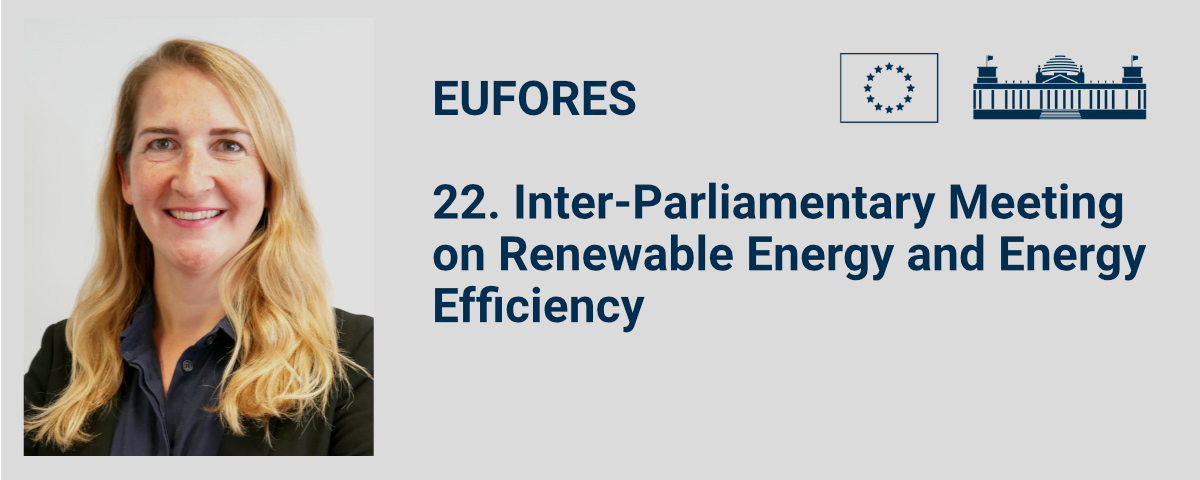
17.10. | Cross-Cluster Event “Hydrogen Potentials for Mobility in Berlin-Brandenburg”
17. October 2022
21.10. | EUFORES 22. Inter-Parliamentary Meeting on Renewable Energy and Energy Efficiency
21. October 2022Incorporation of hydrogen technology in a mini-grid site in Nigeria

In this project, RLI is investigating the use of green hydrogen as an alternative to existing power supply options in a mini-grid in Nigeria. Specific modeling will be used to determine under what conditions the use of green hydrogen is an option for both sustainable and economically viable power supply.
What are mini-grids?
The so-called mini-grids, sometimes also referred to as micro-grids or island grids, are locally separated and self-contained power grids. They supply electricity to multiple homes or businesses and can be powered by a variety of fossil and renewable energy sources. These include, for example, photovoltaic (PV) systems, wind turbines, hydroelectric plants, or diesel generators. To ensure supply stability, a mini-grid often includes battery storage.
Hydrogen as a storage option for surplus electricity
In so-called hybrid systems, mini-grids combine several types of power generation - such as diesel generators with PV systems or wind turbines. This is often done to compensate for seasonal or weather-related fluctuations. These fluctuations occur because renewable energies fluctuate and do not supply a constant amount of electricity at every time of day or year. Diesel generators then often serve as a backup to bridge the supply gap. To feed a mini-grid 100 percent from renewables, the diesel back-up must be replaced. Either by another green power source or by a battery that can supply the grid when generation is less than demand. In addition to lead-acid or lithium batteries, hydrogen can also be used to store energy. In this case, electrolysis is used to store excess energy in the form of hydrogen and oxygen. The hydrogen can then be used to generate electricity with the help of a fuel cell when the supply of renewable energy is low. This option is being investigated in more detail in the project.
Self-developed open source tool is used
The MVS tool developed by RLI is an open-source simulation software that enables the simulation and optimization of multi-vector energy systems. By feeding information from the existing energy system, such as energy system assets, consumption data, and economic data into the tool, the most favorable energy system design considering hydrogen technology (electrolyzer, storage, fuel cell) for the mini-grid was determined. This included the proposed capacities to be installed, as well as their operation and the subsequent economic and technical performance of the system.
Project duration: January 2022 - September 2022
What are mini-grids?
The so-called mini-grids, sometimes also referred to as micro-grids or island grids, are locally separated and self-contained power grids. They supply electricity to multiple homes or businesses and can be powered by a variety of fossil and renewable energy sources. These include, for example, photovoltaic (PV) systems, wind turbines, hydroelectric plants, or diesel generators. To ensure supply stability, a mini-grid often includes battery storage.
Hydrogen as a storage option for surplus electricity
In so-called hybrid systems, mini-grids combine several types of power generation - such as diesel generators with PV systems or wind turbines. This is often done to compensate for seasonal or weather-related fluctuations. These fluctuations occur because renewable energies fluctuate and do not supply a constant amount of electricity at every time of day or year. Diesel generators then often serve as a backup to bridge the supply gap. To feed a mini-grid 100 percent from renewables, the diesel back-up must be replaced. Either by another green power source or by a battery that can supply the grid when generation is less than demand. In addition to lead-acid or lithium batteries, hydrogen can also be used to store energy. In this case, electrolysis is used to store excess energy in the form of hydrogen and oxygen. The hydrogen can then be used to generate electricity with the help of a fuel cell when the supply of renewable energy is low. This option is being investigated in more detail in the project.
Self-developed open source tool is used
The MVS tool developed by RLI is an open-source simulation software that enables the simulation and optimization of multi-vector energy systems. By feeding information from the existing energy system, such as energy system assets, consumption data, and economic data into the tool, the most favorable energy system design considering hydrogen technology (electrolyzer, storage, fuel cell) for the mini-grid was determined. This included the proposed capacities to be installed, as well as their operation and the subsequent economic and technical performance of the system.
Project duration: January 2022 - September 2022
In this project RLI assumes the follwing tasks:
- Collecting the input data from the client
- Development of an example scenario as a basis for the discussion and definition of the subsequent scenarios
- Organization and implementation of a workshop to discuss the procedure, the selection criteria and the scenarios
- Construction and design of the technical-economic systems for the three scenarios developed in the process
- Sensitivity analyses of the scenario by varying the input data







